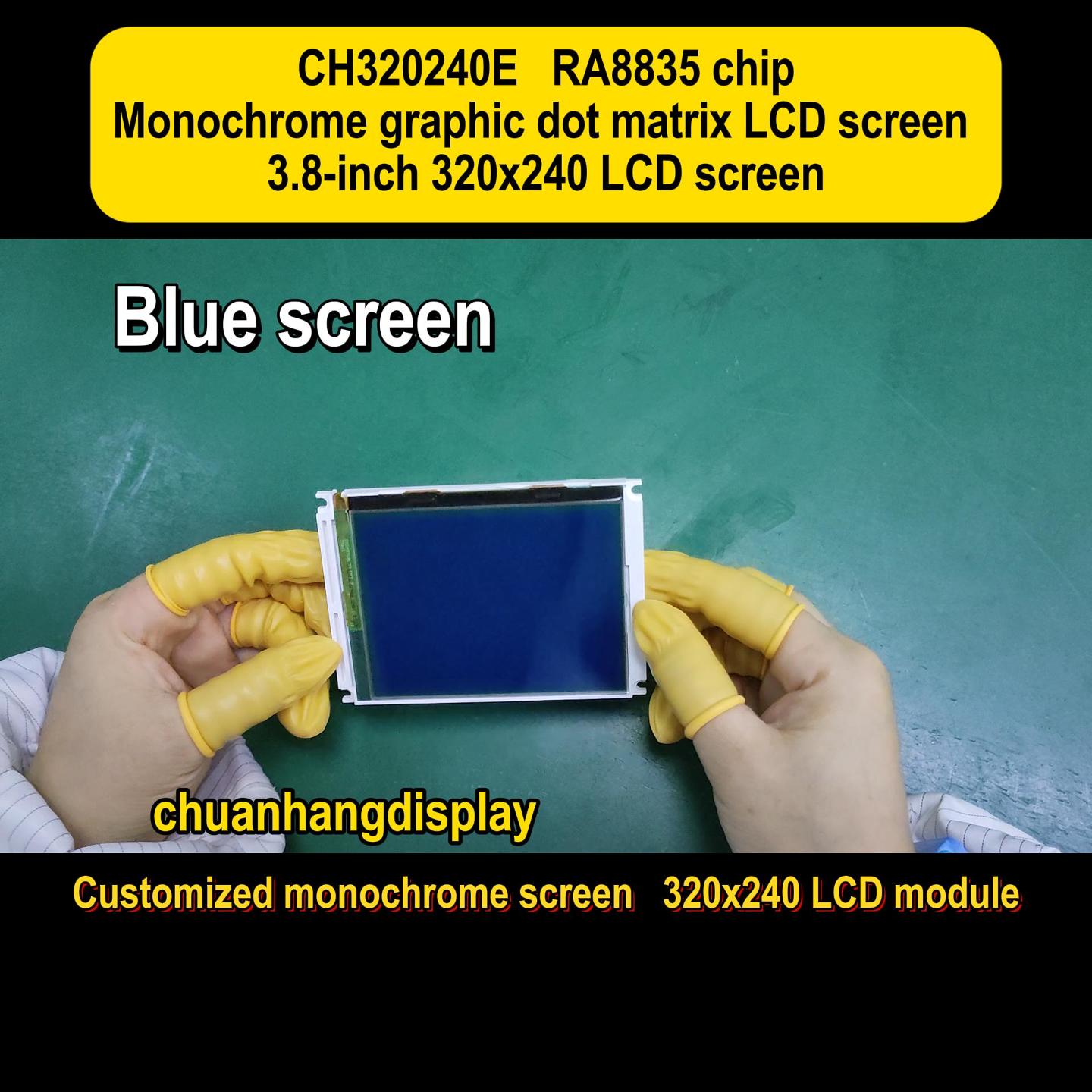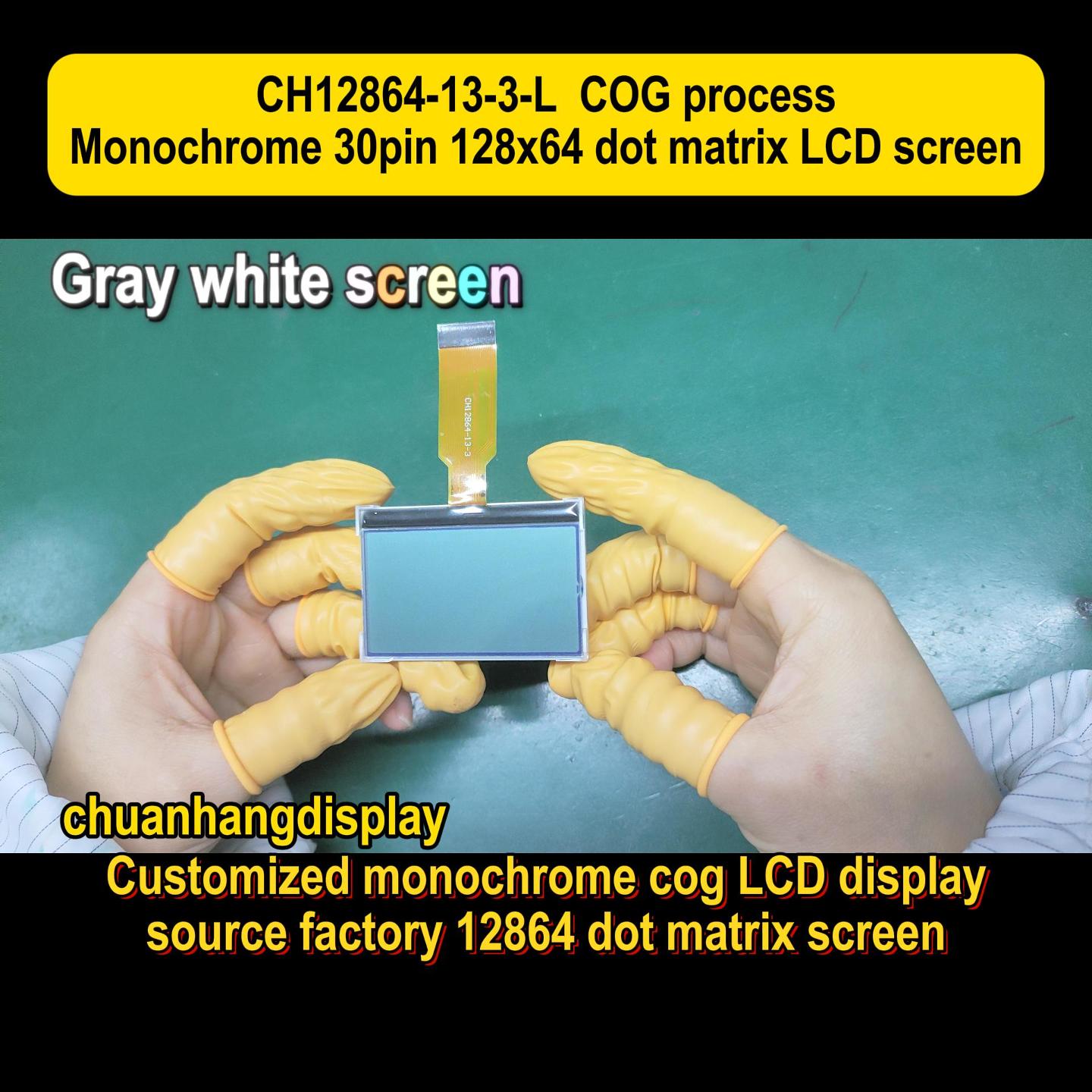In today's digitally driven world, LCD display modules are ubiquitous, powering everything from smartphones and televisions to industrial control systems and medical devices. These modules have revolutionized how we interact with technology, offering crisp visuals, energy efficiency, and versatile applications. As a core component in modern electronics, understanding the intricacies of LCD display modules can help consumers, engineers, and businesses make informed decisions. This article delves into eight key aspects of LCD display modules, providing a comprehensive overview that covers their definition, functionality, types, applications, benefits, drawbacks, selection criteria, and the role of industry leaders like Chuanhang Display. By exploring these facets, you'll gain valuable insights into why LCD display modules remain a dominant force in the display industry, driving innovation across various sectors.

An LCD display module is a self-contained unit that integrates a liquid crystal display (LCD) panel with necessary driving electronics, such as controllers, backlights, and connectors, to form a complete display solution. Unlike standalone LCD panels, these modules are designed for easy integration into larger systems, making them ideal for consumer electronics, automotive dashboards, and industrial equipment. The liquid crystals within the module manipulate light to produce images, relying on an external light source like LEDs for illumination. This compact design allows for thin, lightweight displays that consume less power compared to older technologies like CRT monitors. Essentially, an LCD display module serves as the visual interface in many devices, translating electronic signals into readable text, graphics, or videos. With advancements in technology, modules from brands like Chuanhang Display have enhanced features such as touch sensitivity and high-resolution outputs, catering to diverse user needs. Understanding the basic composition of an LCD display module is the first step in appreciating its widespread use and functionality in everyday gadgets.
The operation of an LCD display module hinges on the unique properties of liquid crystals, which can control the passage of light when subjected to an electric field. Typically, the module consists of multiple layers: a backlight (often LED-based), polarizing filters, a layer of liquid crystals, and color filters. When power is applied, the liquid crystals twist or untwist in response to electrical signals from the driver IC, either allowing light to pass through or blocking it. This manipulation creates pixels that form images on the screen. For instance, in a typical LCD display module, each pixel is composed of subpixels for red, green, and blue, which combine to produce a full spectrum of colors. The backlight provides uniform illumination, ensuring visibility even in low-light conditions. This process is highly efficient, as it only consumes power when changing the state of the crystals, leading to lower energy usage. Moreover, modern LCD display modules incorporate technologies like TFT (Thin-Film Transistor) for faster response times and better image quality. By grasping this working mechanism, users can better appreciate why LCD display modules are preferred in applications requiring reliable, long-lasting displays, such as those offered by Chuanhang Display.
LCD display modules come in various types, each tailored to specific applications and performance requirements. Common variants include TN (Twisted Nematic), IPS (In-Plane Switching), and VA (Vertical Alignment) panels. TN panels are known for their fast response times and affordability, making them suitable for gaming monitors and basic displays. However, they often suffer from limited viewing angles and color accuracy. In contrast, IPS panels offer superior color reproduction and wider viewing angles, ideal for professional graphics work and high-end smartphones. VA panels strike a balance with better contrast ratios than TN but slower response times. Additionally, there are monochrome LCD display modules used in devices like calculators and industrial gauges, where color isn't necessary. Another notable type is the TFT LCD display module, which uses active matrix technology for sharper images and smoother video playback. Brands like Chuanhang Display specialize in producing a range of these modules, including custom designs for niche markets. Understanding these types helps in selecting the right LCD display module based on factors like budget, environment, and intended use, ensuring optimal performance in everything from consumer gadgets to specialized equipment.

The versatility of LCD display modules enables their use across a broad spectrum of industries. In consumer electronics, they are integral to smartphones, tablets, laptops, and televisions, providing users with interactive and visual experiences. The automotive sector relies on LCD display modules for infotainment systems, dashboard displays, and rear-view cameras, enhancing safety and convenience. Industrial applications include control panels, machinery interfaces, and monitoring systems, where durability and clarity are paramount. Medical devices, such as patient monitors and diagnostic equipment, utilize these modules for accurate data representation, often requiring high reliability and compliance with health standards. Additionally, LCD display modules are found in retail point-of-sale systems, digital signage, and home appliances like microwaves and refrigerators. Companies like Chuanhang Display have expanded their reach by supplying modules for these diverse fields, emphasizing features like low power consumption and rugged designs. This widespread adoption underscores the adaptability of LCD display modules, which continue to evolve with trends like IoT and smart homes, further embedding them into daily life and professional environments.
One of the primary advantages of LCD display modules is their energy efficiency, as they consume significantly less power than older display technologies like plasma or CRT. This makes them ideal for battery-operated devices, such as mobile phones and portable instruments. Additionally, LCD display modules offer excellent image quality with high resolutions and vibrant colors, supported by advancements in backlighting and panel types. Their slim and lightweight design allows for sleek product form factors, contributing to the miniaturization of modern electronics. Another benefit is their longevity; with no moving parts and solid-state construction, these modules have a long lifespan and are less prone to damage from vibrations or shocks. Cost-effectiveness is also a key advantage, as mass production has made LCD display modules affordable for a wide range of applications. Brands like Chuanhang Display enhance these benefits by incorporating features such as wide temperature ranges and custom interfaces, catering to specific market needs. Overall, the combination of efficiency, durability, and visual performance makes LCD display modules a preferred choice in many sectors, driving innovation and user satisfaction.
Despite their many benefits, LCD display modules have certain limitations that users should consider. One common issue is their dependence on a backlight, which can lead to uneven lighting or "backlight bleed" in some models, affecting image uniformity. Additionally, LCD display modules typically have slower response times compared to OLED displays, which may result in motion blur during fast-paced videos or gaming. Viewing angles can be another drawback, especially in cheaper TN panels, where colors may shift when viewed from the side. Another limitation is their performance in extreme temperatures; liquid crystals can become sluggish in very cold conditions or degrade in high heat, though specialized modules from companies like Chuanhang Display address this with enhanced materials. Furthermore, LCD display modules are not as flexible as newer technologies, limiting their use in curved or foldable devices. Lastly, they can be susceptible to image retention or "burn-in" if static images are displayed for prolonged periods, although this is less common than in plasma screens. By acknowledging these drawbacks, users can make informed decisions and seek modules that mitigate these issues through advanced engineering.
Selecting the appropriate LCD display module involves evaluating several factors to match specific application requirements. Key considerations include resolution, which determines image clarity; for instance, higher resolutions like Full HD or 4K are essential for detailed graphics in monitors or TVs. Size and aspect ratio also play a role, as they affect the overall user experience and device integration. Brightness and contrast ratios are crucial for outdoor or high-ambient-light environments, ensuring readability. Additionally, interface options—such as HDMI, VGA, or LVDS—must align with the host system's capabilities. Durability features, like wide operating temperature ranges and shock resistance, are vital for industrial or automotive uses. It's also important to assess power consumption, especially for portable devices, and look for energy-efficient models. Reputable brands like Chuanhang Display offer a variety of LCD display modules with customizable options, helping buyers find solutions that balance cost and performance. By carefully analyzing these aspects, users can invest in a module that delivers reliability and enhances the functionality of their products, whether for consumer electronics or specialized industrial tools.
Brands such as Chuanhang Display play a pivotal role in advancing the LCD display module market through innovation, quality assurance, and customer-centric solutions. As a manufacturer, Chuanhang Display focuses on producing high-performance modules that meet diverse industry standards, from consumer electronics to medical and automotive applications. Their expertise in research and development leads to improvements in areas like energy efficiency, touchscreen integration, and environmental durability. By offering customizable LCD display modules, they enable businesses to tailor displays to specific needs, fostering innovation in product design. Moreover, Chuanhang Display emphasizes rigorous testing and compliance with international regulations, ensuring reliability and safety. Their global supply chain and support services help streamline integration for clients, reducing time-to-market for new devices. In a competitive landscape, brands like Chuanhang Display contribute to the evolution of LCD technology, pushing boundaries with features like higher refresh rates and better color accuracy. This commitment not only enhances user experiences but also drives sustainability through eco-friendly manufacturing practices. Ultimately, such brands are essential in maintaining the relevance and growth of LCD display modules in an ever-changing technological world.
In summary, LCD display modules are fundamental to modern technology, offering a blend of efficiency, versatility, and performance across various applications. From understanding their basic workings to selecting the right type and recognizing industry leaders like Chuanhang Display, this overview highlights why these modules remain a cornerstone of digital displays. As technology evolves, LCD display modules will continue to adapt, incorporating new features to meet future demands.
Q1: What is the typical lifespan of an LCD display module?
A1: The typical lifespan of an LCD display module ranges from 30,000 to 60,000 hours of use, depending on factors like backlight type, operating conditions, and quality. For instance, modules from brands like Chuanhang Display often exceed this range with proper maintenance, making them suitable for long-term applications in industrial and consumer devices.
Q2: Can LCD display modules be used in outdoor environments?
A2: Yes, many LCD display modules are designed for outdoor use, featuring high brightness levels (e.g., 1000 nits or more) and anti-glare coatings to ensure visibility in sunlight. However, it's essential to choose modules with weather-resistant properties, such as those offered by Chuanhang Display, which include wide temperature tolerance and protective sealing.
Q3: How do I clean an LCD display module without damaging it?
A3: To clean an LCD display module, use a soft, lint-free cloth slightly dampened with water or a specialized screen cleaner. Avoid harsh chemicals, abrasive materials, and excessive pressure, as these can damage the screen surface. Gently wipe in a circular motion and ensure the module is powered off during cleaning to prevent electrical issues.
Q4: What is the difference between an LCD display module and an OLED display?
A4: An LCD display module relies on a backlight to illuminate liquid crystals for image formation, while an OLED display uses organic compounds that emit light independently, allowing for deeper blacks and better contrast. LCD modules are generally more cost-effective and durable for large screens, whereas OLEDs offer superior flexibility and energy efficiency in thinner designs.
Q5: Are LCD display modules customizable for specific projects?
A5: Absolutely, many manufacturers, including Chuanhang Display, provide customizable LCD display modules that can be tailored in terms of size, resolution, interface, and additional features like touchscreens or enhanced durability. This flexibility makes them ideal for specialized applications in fields such as healthcare, automotive, and industrial automation.